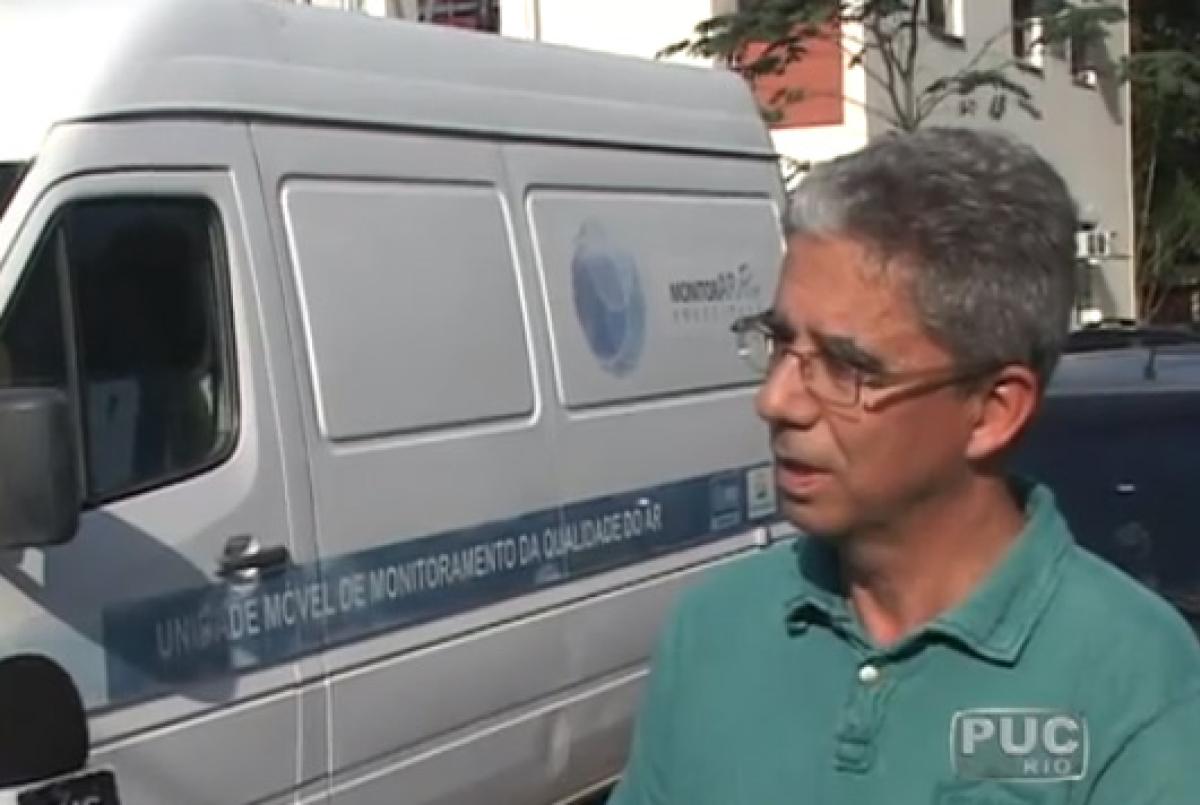The Brazilian bottled mineral water market is valued at a sizeable multi-billion liters produced annually. This large bottled water production associated with a surge in its seasonal demand presents a tempting opportunity for counterfeits to make their way into the Brazilian marketplace. In Prof. José Marcus Godoy’s study, the use of stable isotope analysis (d18O & dD) was proven to be a valuable tool in tracing the origin of the bottled water to at least the state level within the vast territory of Brazil. Using this data, national and regional meteoric water lines were constructed. These fundamental measurements lay the groundwork to further extend the use of stable isotope analysis to trace ethanol production to its geographical origin in order to expose fraudulent activities that exploits the discrepancies in regional ethanol fuel taxes.
Professor José Marcus Godoy is a leading Brazilian scientist in the fields of applied stable and radioactive isotopes. He is a professor of chemistry at Pontificia Universidade Catolica do Rio de Janeiro (PUC-Rio) and the head of the Instituto de Radioproteção e Dosimetria – National Commission of Nuclear Energy.
Nabil Saad: Prof. Godoy, thank you for the opportunity to discuss with you the findings in your recently published work. To start with, how big is the bottled mineral water market in Brazil?
José Marcus Godoy: The bottled mineral water market has reached 7.2 billion liters annually according to the Brazilian Mineral Water Industry Association (ABINAM).
NS: Are these all recognized brand names with a commensurate price tag?
JMG: Several Brazilian brands may be found, many of which are sold only seasonally. Also, some imported brands are also found with a markedly higher price.
NS: Along that same line, given the geographical size of Brazil, does the Brazilian production of mineral water have a regional character depending on the area where it was sourced?
JMG: Yes, indeed. Brazilian mineral water production has a local character with few brands available nationally.
NS: Would it be safe to assume that such a large volume of bottled water represent an incentive for adulteration and brand counterfeit?
JMG: Actually, during summer time, when the demand for bottled water increases, relatively unknown brands often appear on the market, in particular those sold in large 20 liters packages for water coolers, causing concerns about their provenance. In addition, the price tag of imported bottled water could be a temptation for counterfeiting.
NS: Then, how would you envision exposing these counterfeit products?
JMG: Stable isotope analyses of dD and d18O represent a potential tool for detecting fraud and mislabeling since these two isotopes should reflect the water source isotopic fingerprint in latitude and altitude.
NS: To this end, how many bottled water brands did you survey in your study?
JMG: We surveyed 66 different brands and variations within the same brand name.
NS: I am curious to know whether any of the regions or brands that you have surveyed in your study had a distinctive isotope signature?
JMG: The Brazilian southeast and northeast regions surveyed have a large number of sampling locations close to the coast and the resulting local meteoric water lines for these regions are similar to the global meteoric water line (GMWL). However, the central-western region local meteoric water line differed markedly from the GMWL, perhaps because of the continental geography. One interesting finding was that most of the bottled water brands sampled in the Sate of Rio de Janeiro have an isotopic signature that is distinct from those neighboring states. In particular, the more expensive brands, such as Sao Lourenco and Minalba, showed a distinctive signature that lends itself to authenticity verification.
NS: Given the large geographical size of Brazil, how long did it take to complete this project from finish to start, including sample acquisition and analysis?
JMG: It took us about one year. The main difficulty was to obtain samples from remote regions like the North region, some thousand kilometers from Rio de Janeiro. After a wait period during which were not able to obtain new samples, we eventually decided to interrupt the study.
NS: Would you see this effort expanding to other Brazilian beverages, such as juices for instance, knowing that the price difference between fresh vs. reconstituted juice beverages might as well be a temptation for adulteration?
JMG: What we intend to do next is to use the information about the local δD values to differentiate among the ethanol producing areas, for example, between Rio de Janeiro and São Paulo states there is a large difference on the taxes paid for fuels which leads to some fraud related to ethanol declared origin at the fuel stations.
NS: This is a very ambitious and exciting plan, knowing that Brazil depends heavily on ethanol for car fuel. So, in case of a counterfeit identification on the market, would your findings be the basis for litigation? In other words, are evidence produced by CRDS admissible in a Brazilian court?
JMG: Yes, I guess, particularly after this publication. What we are doing right now is presenting the achieved results at Brazilian scientific conferences as well as at the annual meeting of the Brazilian Geological Society and the ABINAM annual meeting to rally more support for data produced with the CRDS technology.
NS: Prof. Godoy, it was great picking your brain. Anything you’d like to add or comment on regarding the study that you’ve conducted?
JMG: I am sure that the isotopic information is a powerful tool on several branches and the CRDS technology allow us to expand the use of this tool to new frontiers.
